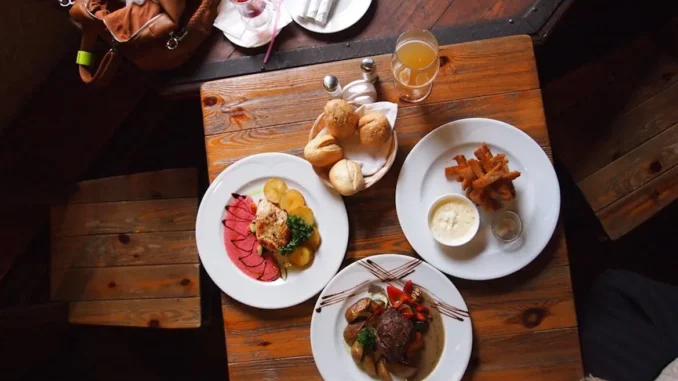
Elevate Your Dining Experience: The Art and Science of Tableware
When we think about dining, our minds often gravitate towards the food itself—its flavours, textures, and aromas. However, an often-overlooked element of the dining experience is the tableware. Believe it or not, the plates, bowls, and utensils you choose can profoundly impact not only the aesthetics of your meal but also how it tastes and feels. This article delves into the fascinating world of tableware, offering expert advice and practical tips on how to style your table to create unforgettable dining experiences.
The Sensory Impact of Tableware
Scientific research has revealed that the colour, texture, and weight of tableware can influence our perception of food flavours and textures. For instance, hot chocolate tends to taste sweeter when served in an orange cup, while red plates can notably increase your appetite. Even the type of spoon you use can make a difference; yoghurt feels denser when eaten with a plastic spoon compared to a metal one. These subtle nuances underline the importance of selecting the right tableware to elevate your dining experience.
Choosing the Right Tableware for Your Home
When selecting tableware for your home, consider your culinary preferences, existing home décor, and personal style. Investing in a few different but complementary sets allows for versatility, enabling you to mix and match according to the occasion, whether it’s a formal dinner party or a casual weeknight meal.
Shape: Modern tableware is moving away from traditional round plates, embracing creative shapes such as squares, rectangles, and irregular circles. Soft, slightly curved shapes are currently in vogue, reflecting broader interior design trends. However, practicality should not be overlooked. Opt for shapes that are functional for the dishes you enjoy.
Texture: Mixing contrasting textures can give your dinnerware a contemporary update. The slow food movement has inspired a return to handcrafted pieces, with Japanese-style pottery being particularly popular. These earthy, grainy textures create a striking contrast to smoother, more traditional plate styles. Embossed patterns, like French provincial designs, can also add subtle texture to your table setting.
Colour: While white remains a classic choice for making the dish the focal point, muted tones like stone greys, chocolate, and dusty pastels can also enhance the visual appeal of your food. Robust dishes can handle bolder colours such as rich reds, forest greens, and deep blues. When using patterned sets, a good rule of thumb is to layer them with complementary plain colours. For a modern feel, try pairing a marble pattern with soft pastel blues or pinks.
A Guide to Tableware Materials
Understanding the different materials used in tableware can help you make informed choices that suit your needs and lifestyle.
Earthenware: Typically the most affordable option, earthenware is fired at a lower temperature and often finished with varnish. While it offers a textured twist to table settings, it is porous, heavy, and prone to scratching, making it less durable.
Stoneware: Fired at a higher temperature, stoneware is stronger, thicker, and more durable than earthenware. It is often dishwasher and microwave safe, making it a practical choice for everyday use.
China: This term refers to ceramics made from kaolin clay, a more refined clay than that used for earthenware and stoneware. There are several types of china, each with its own characteristics.
-
Porcelain: Fired at an even higher temperature, porcelain is hard, white, and non-porous. It is durable, strong, and highly resistant to heat, yet lighter and thinner than stoneware and earthenware. This makes it a popular choice for everyday crockery sets.
-
Bone China: Similar to porcelain but with the addition of 25% calcified bone or bone ash, making it lighter and often more translucent. Despite its delicate appearance, bone china is one of the strongest and most durable crockery materials available.
-
Fine China: Made similarly to bone china but without the addition of bone ash, fine china is closer to porcelain in composition. It is fired at a higher temperature, resulting in a harder and more durable material. Fine china and bone china are often reserved for special occasions but can be used for everyday dining if desired.
Crafting an Unforgettable Dining Experience
Tableware is more than just a vessel for your food; it sets the tone for the entire dining experience. By carefully selecting pieces that complement your culinary style and home décor, you can create a dining atmosphere that is both visually appealing and sensory-enhancing. Next time you set the table, remember that the right tableware can transform your meal into a feast for both the stomach and the soul.


Be the first to comment